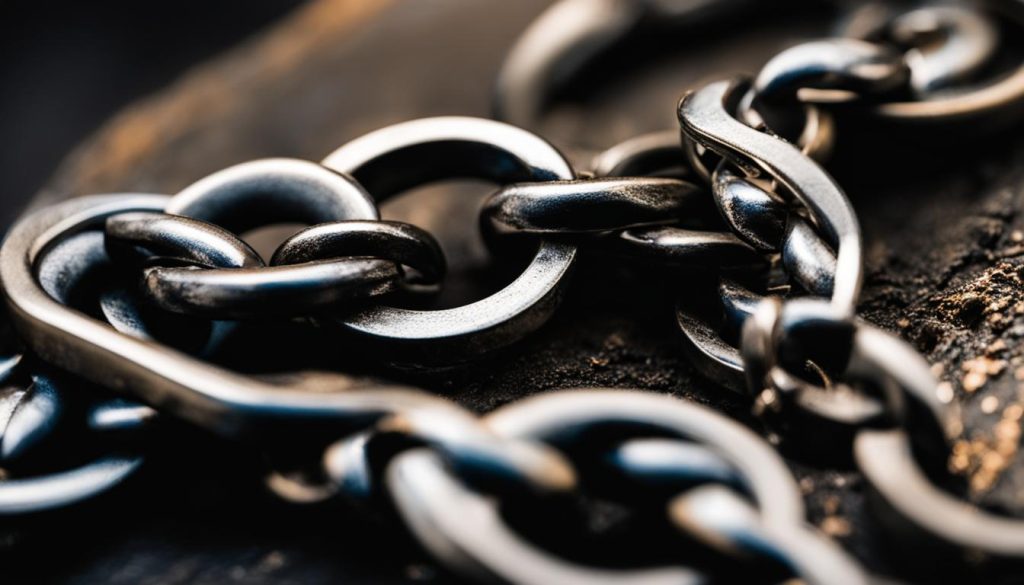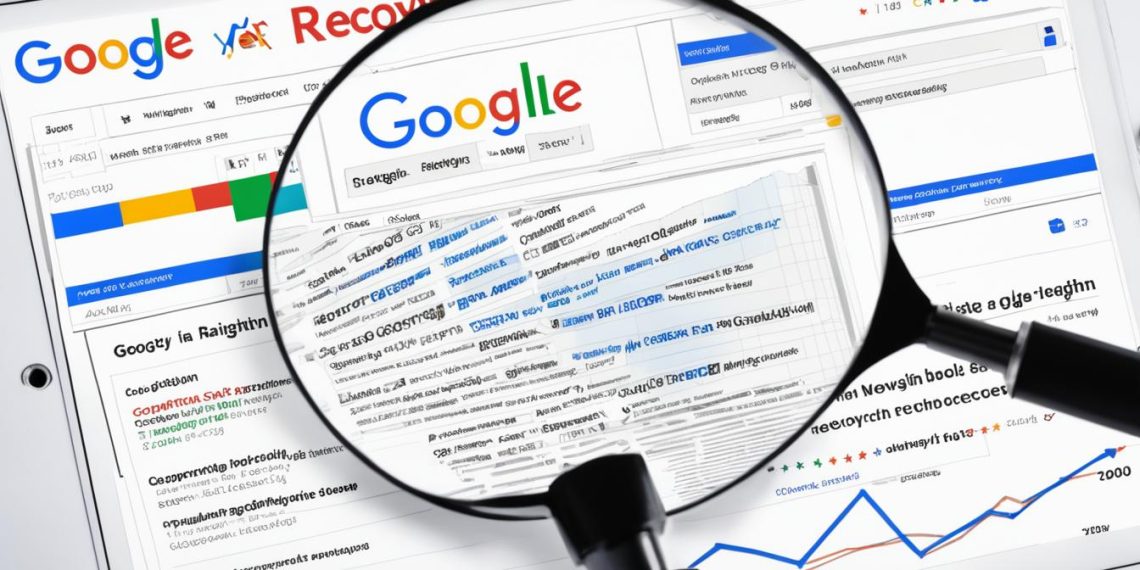Google consistently updates its search algorithms to guarantee that you quickly locate what you’re looking for. It’s essential for website owners to keep up with these changes, as they may affect your website’s standing in Google’s search results. This article delves into the latest modifications made by Google, aims to pinpoint potential issues early, and offers recovery tips to assist in improving your website’s search engine ranking to a leading spot. Continue reading to discover strategies to ensure your website remains visible on Google.
Key Takeaways:
- Google algorithm updates aim to improve content quality and user experience.
- Diagnosing algorithm updates involves monitoring traffic drops and manual actions.
- Panda updates focus on reducing poor quality content; analyze your site for duplication and keyword stuffing.
- Penguin updates target spammy link building practices; clean up your backlink profile and submit a reconsideration request.
- Pigeon updates aim to improve local search results; optimize your site for local search and engage with local directories.
Understanding Google’s Algorithm Updates
Google Algorithm Update plays a crucial role in determining your organic search visibility, SEO performance, and search engine ranking. It’s essential to keep up with these updates to stay ahead of the competition. Google regularly makes updates to enhance content quality for its users. Each update is designed with a specific focus to address different aspects and improve the overall search experience. Let’s take a closer look at some of the key algorithm updates:
Panda Update
The Panda update aims to reduce poor quality content in search results and boost high-quality content.
This update targets websites with duplicate content, keyword stuffing, and irrelevant or low-quality content. If your website has been affected by the Panda update, it’s crucial to analyze your site’s content and make improvements to ensure it meets Google’s quality guidelines. By focusing on creating valuable and unique content, you can recover from the Panda penalty and improve your organic search visibility.
Penguin Update
The Penguin update penalizes websites with spammy link building practices.
This update specifically targets websites that engage in manipulative link building techniques or have over-optimized anchor text. To recover from a Penguin penalty, it’s important to clean up your backlink profile by removing or altering over-optimized anchor text. Reach out to websites with poor quality links and request their removal. Furthermore, utilize the disavow tool to disassociate from any remaining problematic links. Lastly, submit a reconsideration request to Google to ensure your efforts are recognized and your website’s search engine ranking is restored.
Pigeon Update
The Pigeon update focuses on improving local search results.
If you’ve experienced a drop in local search traffic, optimizing your website for local search is crucial. Display your business address prominently on your website and ensure your industry and location-specific keywords are used appropriately. Verify your business accounts with local directories and encourage customers to leave reviews. By following these steps, you can recover from the effects of the Pigeon update and strengthen your organic search visibility in local search results.
Payday Loan Algorithm
The Payday Loan Algorithm combats spammy search queries.
If your website has been affected by this update, it’s important to eliminate any spammy content and remove or disavow low-quality links. Ensure your content aligns with Google’s guidelines and is valuable to users. Follow the recovery steps outlined for the Penguin penalties and submit a reconsideration request to regain your website’s search engine ranking.
Understanding how each algorithm update impacts your website and implementing the necessary adjustments is essential for maintaining and improving your organic search visibility and SEO performance. It’s important to stay informed about Google’s algorithm updates, adapt your SEO strategy accordingly, and focus on providing valuable and relevant content to your audience.
| Algorithm Update | Focus |
|---|---|
| Panda | Reducing poor quality content |
| Penguin | Penalizing spammy link building |
| Pigeon | Improving local search results |
| Payday Loan Algorithm | Combating spammy search queries |
Diagnosing Algorithm Updates
When an algorithm change occurs, it’s important to understand its impact on your website’s performance. Whether you’ve experienced a sudden drop in traffic or received a manual action from Google, diagnosing the algorithm update can help you identify the root cause.
To navigate through the complex world of algorithm changes, you can turn to trusted sources such as Google’s head of web spam, Matt Cutts. Matt often shares insights and information about the updates, providing valuable guidance for affected website owners.
Another valuable resource is the Moz’s Google Algorithm Change Timeline. This comprehensive timeline outlines the major algorithm updates released by Google over the years, providing a historical perspective on the changes that may have impacted your site’s visibility.
By reviewing the timeline and analyzing the dates when your drop in traffic or manual action occurred, you can gain valuable insights into which specific algorithm update might be responsible for the changes you’re experiencing.
Tip: When diagnosing algorithm updates, it’s essential to consider both the timing of the changes and the specific elements of your website that might have triggered the penalty or ranking drop.
Understanding the algorithm changes that affect your website is the first step towards recovery. Once you have identified the update, you can develop a targeted action plan to address the issues and regain your organic search visibility.
Recovering from Panda Algorithm Update
Panda updates are aimed at reducing poor quality content in search results and boosting high-quality content. To recover from a Panda penalty, you need to analyze your website’s content for poor quality indicators like duplication, keyword stuffing, or unrelated content. Focus on creating meaningful and helpful content that follows Google’s quality guidelines.
One of the key factors in recovering from a Panda algorithm update is addressing poor quality content on your website. This includes:
- Duplicate Content: Identify and eliminate any duplicate content on your site. Duplicate content can confuse search engines and negatively impact your rankings.
- Keyword Stuffing: Avoid overusing keywords in your content. Keyword stuffing is a practice that artificially inflates keyword density and can result in penalties from Google.
- Poorly Written Content: Ensure that your content is well-written, engaging, and provides value to your audience. Poorly written content with grammar and spelling errors can be seen as low quality.
- Unrelated or Thin Content: Review your website for any irrelevant or thin content that doesn’t offer substantive information or value to users. Eliminate or improve such content.
By addressing these poor quality content issues and focusing on creating high-quality, valuable content that adheres to Google’s quality guidelines, you can recover from a Panda penalty and improve your website’s search visibility.

How to Create High-Quality Content
Creating high-quality content that meets Google’s guidelines is crucial for recovering from a Panda algorithm update. Here are some tips:
- Focus on User Intent: Understand the intent behind the search queries relevant to your content. Provide comprehensive information that satisfies users’ needs.
- Write Original and Unique Content: Produce original content that offers a fresh perspective or unique insights. Avoid duplicating content from other sources.
- Provide Value and Relevance: Make sure your content is valuable and relevant to your target audience. Offer practical advice, useful tips, or in-depth analysis.
- Organize and Structure Content: Use headings, subheadings, and bullet points to structure your content and make it easy to consume. This helps both users and search engines understand the organization of your information.
- Use Descriptive Titles and Meta Tags: Optimize your titles, meta descriptions, and other meta tags to accurately describe the content of each page. This helps search engines understand what your content is about.
By implementing these strategies, you can ensure that your content is of high quality and aligned with Google’s guidelines, which will improve your chances of recovering from a Panda algorithm update and maintaining a strong online presence.
Recovering from Penguin Algorithm Update
The Penguin algorithm update is designed to target websites that engage in spammy link building practices and have over-optimized anchor text. If your website has been penalized by Penguin, it’s crucial to take immediate action to recover your rankings and restore your website’s visibility in search engine results.
Here are the steps you need to follow to recover from a Penguin penalty:
- Clean up your backlink profile: Start by identifying and removing any spammy or low-quality links pointing to your website. These could be links from link farms, paid directories, or irrelevant websites. Focus on building a strong and natural backlink profile that is in compliance with Google’s guidelines.
- Alter over-optimized anchor text: Penguin penalizes websites that excessively use exact-match keywords in their anchor text. Review your backlink anchor text distribution and make necessary alterations to ensure a more diverse and natural link profile. Use branded or generic anchor text alongside relevant keywords.
- Reach out to websites with poor links: If you discover websites with poor-quality links pointing to your site, reach out to the webmasters and request the removal of those links. Although this process can be time-consuming, it’s an essential step to demonstrate to Google that you’re actively working on cleaning up your backlink profile.
- Utilize the disavow tool: For any remaining problematic links that you couldn’t remove, you can utilize Google’s disavow tool. This tool allows you to submit a list of URLs or domains you want Google to ignore when evaluating your backlink profile. Exercise caution when using the disavow tool and only disavow links that you genuinely believe to be harmful to your website’s rankings.
- Submit a reconsideration request to Google: Once you’ve completed the necessary steps to clean up your backlink profile, you can submit a reconsideration request to Google. This request is an opportunity for you to explain the actions you’ve taken to rectify the issue and request a review of your website. Be transparent and provide detailed information about the steps you’ve taken to resolve the problem.
Recovering from a Penguin penalty can be challenging, but by following these steps diligently and adhering to Google’s quality guidelines, you can regain your website’s organic search visibility and improve your search engine rankings.
| Common Mistakes to Avoid | Best Practices to Follow |
|---|---|
| Engaging in link schemes | Focus on acquiring high-quality, relevant backlinks from authoritative websites. |
| Using keyword stuffing in anchor text | Optimize anchor text with a mix of branded, generic, and relevant keywords. |
| Ignoring low-quality links | Regularly monitor your backlink profile and take action against toxic or spammy links. |
| Purchasing links or participating in link exchanges | Avoid any activities that violate Google’s guidelines and focus on organic link building through content and relationship building. |
Recovering from Pigeon Algorithm Update
The Pigeon algorithm update is designed to enhance local search results, making it crucial for businesses to optimize their websites accordingly. If your website has experienced a drop in traffic due to this update, there are several strategies you can implement to recover and improve your local search rankings.
To begin recovering from the Pigeon algorithm update, consider the following key steps:
- Display Your Business Address: Prominently showcase your business address on your website, preferably in the footer or contact page. This helps search engines associate your website with a specific location, improving your chances of appearing in local search results.
- Optimize for Local Keywords: Incorporate location-specific keyword terminology throughout your website content to signal your relevance to local searches. For example, if you run a bakery in San Francisco, include phrases like “best bakery in San Francisco” or “San Francisco bakery” within your website’s copy.
- Verify Accounts with Local Directories: Register and verify your business with reputable local directories, such as Google My Business, Yelp, Yellow Pages, and Bing Places. Completing these profiles enhances your local visibility and credibility.
- Encourage Customer Reviews: Positive online reviews can significantly impact your local search rankings. Encourage satisfied customers to leave reviews on platforms like Google My Business, Yelp, and Facebook. Responding to reviews, both positive and negative, can also help improve your online reputation.
| Recovery Steps for Pigeon Algorithm Update |
|---|
| Display your business address prominently on your website |
| Optimize your website with location-specific keywords |
| Verify your business with local directories |
| Encourage customer reviews on relevant platforms |
Implementing these strategies will help you recover from the Pigeon algorithm update, enhance your local search optimization efforts, and increase your visibility in location-based search results.
Case Study: Local Bakery Boosts Online Presence with Pigeon Recovery
“After experiencing a drop in traffic following the Pigeon algorithm update, our bakery implemented a comprehensive recovery plan. We optimized our website for local search by prominently displaying our address, incorporating location-specific keywords, and verifying our business with local directories. We also actively encouraged our customers to leave reviews on platforms like Google My Business. As a result, our online visibility improved, and we noticed a significant increase in local search rankings and customer footfall.”
– Lisa Miller, Owner of Sweet Delights Bakery
Implementing local search optimization strategies can help businesses improve their online presence and attract local customers
Recovering from Payday Loan Algorithm Update
The Payday Loan Algorithm update focuses on targeting spammy search queries. If your website has been affected by this algorithm update, there are several steps you can take to recover and improve your search engine rankings.
Eliminate Spammy Content
To start the recovery process, it is essential to identify and eliminate any spammy content from your website. This includes removing or rewriting content that uses excessive keywords or employs manipulative tactics to boost search rankings. By creating high-quality, informative, and relevant content, you can ensure that your website aligns with Google’s guidelines and offers value to your visitors.
Remove or Disavow Low-Quality Links
Another crucial step in recovering from the Payday Loan Algorithm update is to review and remove any low-quality backlinks that may be negatively impacting your website’s SEO performance. Conduct a thorough link audit to identify spammy or irrelevant links, and then take action to have them removed. If you encounter difficulties in removing certain links, you can use the disavow tool provided by Google to disassociate your website from those problematic links.
Follow Reconsideration Steps
In cases where your website has received a manual action or penalty as a result of the Payday Loan Algorithm update, it is important to follow the reconsideration steps outlined by Google. These steps typically involve submitting a reconsideration request to Google, where you explain the actions taken to rectify any violations and demonstrate your commitment to adhering to Google’s guidelines moving forward.
By implementing these strategies to eliminate spammy content and low-quality links, and following the reconsideration steps when necessary, you can recover from the Payday Loan Algorithm update and improve your website’s search engine rankings.

“Eliminate spammy content and low-quality links to recover from the Payday Loan Algorithm update and improve your search engine rankings.”
Avoiding Penalties
To avoid penalties altogether, it is crucial to follow Google’s guidelines and steer clear of practices that could result in penalties. By adhering to these guidelines and implementing best practices, you can protect your website from potential penalties and maintain a healthy online presence. Here are some key strategies to help you avoid penalties:
Create valuable and original content: Focus on creating high-quality content that provides value to your audience. Avoid duplicating content from other sources or using automated content generation techniques. Valuable and original content that meets user needs is rewarded by search engines and helps build credibility for your website.
Maintain a clean backlink profile: Avoid engaging in spammy link building practices or acquiring low-quality and irrelevant backlinks. Focus on building high-quality and relevant backlinks from reputable websites that are relevant to your niche. Regularly review your backlink profile and disavow any toxic or unnatural links that could harm your website’s SEO performance.
Avoid pure spam: Pure spam refers to any deceptive or manipulative techniques designed to trick search engines and improve rankings artificially. This can include practices like hidden text, keyword stuffing, doorway pages, and cloaking. These tactics go against Google’s guidelines and can result in severe penalties or even complete deindexing from search results.
Quote: “Ethical SEO practices that follow Google’s guidelines not only help you avoid penalties but also build a solid foundation for long-term organic visibility and success.” – SEO Expert
Avoid hidden text: Concealing text on your webpages to manipulate search engines is considered a deceptive practice. Ensure that all text on your website is visible and accessible to users. Avoid techniques like using white text on a white background or hiding text behind images or other elements. Transparency is key when it comes to optimizing your webpages for search engines.
Steer clear of user-generated spam: If your website allows user-generated content such as comments, forums, or guest posts, monitor and moderate it regularly. Implement measures to prevent spam and ensure that any user-generated content adheres to your website’s guidelines. Spammy or irrelevant user-generated content can harm your website’s reputation and SEO performance.
By following Google’s guidelines and avoiding practices like pure spam, hidden text, keyword stuffing, and user-generated spam, you can maintain a clean and penalty-free website. Remember, it’s important to stay informed about any updates or changes to Google’s algorithms and adjust your SEO strategy accordingly.
SEO Guidelines Checklist
| Guidelines | Actions |
|---|---|
| Create valuable and original content | Produce high-quality, unique content that meets user needs. |
| Maintain a clean backlink profile | Regularly review backlinks, remove toxic links, and disavow any harmful ones. |
| Avoid pure spam | Stay away from deceptive practices, keyword stuffing, and other manipulative techniques. |
| Avoid hidden text | Ensure all content is visible and accessible to users and search engines. |
| Steer clear of user-generated spam | Moderate user-generated content and prevent spam or irrelevant submissions. |
Impact Assessment Services
Our impact assessment services provide comprehensive analysis and tailored strategies to help you recover from algorithm updates and improve your website’s search performance. We offer expertise in SEO analysis, algorithm update recovery, content quality auditing, and technical quality analysis.
Diagnosing Ranking Drops
If your website has experienced a decrease in search rankings, it’s crucial to understand the underlying factors contributing to the drop. Our team conducts a thorough SEO analysis to identify potential issues, such as recent algorithm updates or technical issues impacting your website’s visibility.
Content Quality Auditing
Content plays a critical role in search engine rankings. Our experts conduct a comprehensive content quality audit to assess the relevance, uniqueness, and optimization of your website’s content. We identify areas that may be triggering algorithm penalties and provide tailored recommendations for improvement.
Technical Quality Analysis
A website’s technical aspects can significantly impact its search performance. We perform a thorough technical quality analysis to identify any issues that may be hindering your website’s visibility and rankings. From site speed optimization to mobile responsiveness, we provide recommendations to enhance your website’s technical performance.
“Our impact assessment services offer a holistic approach to algorithm recovery. By addressing both content quality and technical issues, we ensure your website is optimized for improved search performance.” – SEO Expert
| Our Impact Assessment Services | Benefits |
|---|---|
| SEO Analysis | Identify underlying issues impacting search rankings |
| Algorithm Update Recovery | Tailored strategies to recover from algorithm penalties |
| Content Quality Auditing | Improve website’s content relevance and uniqueness |
| Technical Quality Analysis | Enhance website’s technical performance for better rankings |
Our impact assessment services empower you to overcome algorithm penalties and optimize your website for sustainable search performance. With our expertise in SEO analysis, algorithm recovery, content quality auditing, and technical quality analysis, we provide the tools and strategies needed to thrive in the competitive online landscape.
Recovery Process and Recommendations
When facing a drop in website rankings due to algorithm updates, it is crucial to have a strategic recovery plan in place. Our team of SEO experts is here to guide you through the recovery process, offering personalized recommendations and ongoing optimizations to ensure your website regains its visibility in search results.
Identifying the Root Cause
To kick-start the recovery process, we thoroughly analyze your website to determine the underlying reasons for the ranking drop. By conducting a comprehensive assessment, we pinpoint any algorithmic penalties or issues affecting your site’s performance.
Implementing Customized Recovery Plans
Once we identify the root cause, we develop tailored recovery plans specific to your website’s needs. These plans outline the necessary steps and actions to overcome the penalties and regain lost rankings. Our expertise in algorithm recovery techniques enables us to implement effective strategies that align with the latest updates.
Continuous Monitoring and Optimization
Algorithm recovery is an ongoing process, requiring continuous monitoring and optimization. Our team closely tracks the performance of your website, ensuring that it aligns with the latest algorithm requirements. Through ongoing optimizations, we fine-tune your website’s content, structure, and technical aspects to maintain and improve its search engine rankings.
Content Improvement Recommendations
Content quality plays a vital role in algorithm recovery. We provide comprehensive content improvement recommendations, ensuring that your website meets Google’s guidelines and offers valuable information to users. By optimizing your content with relevant keywords, improving readability, and addressing quality issues, we help boost your website’s visibility in search results.
Link Profile Cleanup and Competitive Analysis
As part of the recovery process, we conduct competitive link analysis to assess your website’s backlink profile. We identify any spammy or low-quality links that might be negatively impacting your rankings and implement a thorough cleanup. By disavowing toxic links and building a strong and authoritative link profile, we help improve your website’s credibility and organic search visibility.
Our recovery process involves a holistic approach, combining technical expertise, data-driven analysis, and strategic optimizations. With our guidance and recommendations, your website can bounce back from algorithm updates and regain its rightful position in search results. Trust our team of SEO experts to navigate the recovery process and set your website on the path to success once again.
Conclusion
Recovering from Google algorithm updates requires a comprehensive approach that encompasses diagnosis, targeted actions, and continuous optimization. By following Google’s guidelines, implementing best SEO practices, and staying updated with algorithm changes, you can ensure the long-term success of your website’s search engine rankings.
When faced with a drop in website ranking due to algorithm updates, the first step is to identify the specific issues that have caused the penalty. Conduct a thorough diagnosis of your website, analyzing factors such as poor quality content, spammy link building, or violation of Google’s guidelines.
Once you have identified the issues, take targeted corrective actions. This may involve improving content quality, eliminating duplicate content or keyword stuffing, cleaning up your backlink profile, or optimizing your website for local search. Tailor your strategies to the specific algorithm update that has impacted your website.
Additionally, ongoing optimization efforts are crucial for maintaining and improving your website’s performance. Regularly monitor your website’s SEO performance, conduct competitive link analysis, and make continuous improvements to your content and technical quality. By embracing a proactive and adaptive SEO strategy, you can position your website for long-term success in the ever-changing landscape of search engine rankings.
FAQ
What are Google’s algorithm updates and how do they affect my website?
Google’s algorithm updates are changes made to the search engine’s ranking system to improve the quality of search results for users. These updates can impact your website’s organic search visibility and SEO performance. Understanding these updates and adapting to them is crucial for maintaining and improving search engine rankings.
How can I diagnose if my website has been affected by an algorithm update?
If you notice a significant drop in website traffic or receive a manual action notification from Google, it is likely that your site has been impacted by an algorithm change. You can use Moz’s Google Algorithm Change Timeline to identify the update that might have affected your site.
What should I do to recover from a Panda algorithm update?
To recover from a Panda penalty, you need to analyze your website’s content for poor quality indicators such as duplication, keyword stuffing, or unrelated content. Focus on creating meaningful and helpful content that follows Google’s quality guidelines.
How do I recover from a Penguin algorithm update?
To recover from a Penguin penalty, clean up your backlink profile by removing or altering over-optimized anchor text. Reach out to websites with poor links and ask for their removal. Utilize the disavow tool to handle remaining problematic links. Submit a reconsideration request to Google.
What steps can I take to recover from a Pigeon algorithm update?
To recover from a drop in traffic due to the Pigeon update, optimize your website for local search by displaying your business address and industry prominently. Use location-specific keywords, verify accounts with local directories, and encourage customer reviews.
How can I recover from the Payday Loan algorithm update?
To recover from the Payday Loan Algorithm update, eliminate spammy content from your site, remove or disavow low-quality links, and follow the same reconsideration steps mentioned for Penguin penalties.
How can I avoid penalties from Google altogether?
To avoid penalties, adhere to Google’s guidelines and avoid practices like pure spam, hidden text, keyword stuffing, and user-generated spam. Create valuable and original content, maintain a clean backlink profile, and ensure your website is free from hacking or malicious activities.
How can impact assessment services help in recovering from algorithm updates?
Our impact assessment services help diagnose the factors contributing to ranking drops and offer tailored recovery strategies. We analyze content quality, assess technical issues, and provide solutions to optimize your website for improved search performance.
What is the recovery process for algorithm updates and what recommendations can I expect?
Our team of SEO experts assists in the recovery process by identifying the root cause of ranking drops, implementing customized recovery plans, and continuously monitoring performance. We offer recommendations for content improvement, link profile cleanup, and ongoing optimization strategies.
How can I ensure the long-term success of my website’s search engine rankings?
Recovering from Google algorithm updates requires a thorough diagnosis of the issues, targeted corrective actions, and ongoing optimization efforts. By following Google’s guidelines, implementing best practices, and staying informed about algorithm changes, you can ensure the long-term success of your website’s search engine rankings.






